Clara M. Chu
Director and Mortenson Distinguished Professor at Mortenson Center for International Library Programs
University of Illinois at Urbana-Champaign
Faith Oguz
Associate Professor at Department of Library and Information Studies
University of North Carolina at Greensboro
Abstract
Objectives: This paper reports on Master of Library and Information Science (MLIS) students' preferences for course delivery (online, blended or face-to-face) and how their preferences differ based on demographic variables. This research is part of a bi-national study that investigated the motivations and experiences that MLIS students had with online education, while completing their graduate degree in an American Library Association (ALA)-accredited institution.
Methodology: The study used an online survey to gather data from Master's degree students enrolled in LIS programs accredited by ALA, a professional association which accredits programs in the US, Puerto Rico, and Canada. The online questionnaire was administered with the assistance of the administration and their student associations of LIS programs. Thirty-six programs from Canada and the US were represented by the 1,038 students who responded to the online survey. Respondents who had taken and completed at least one online course constituted the sample (n=910) that was used for analysis and the reporting of the results.
Results: The findings show that there were five statistically significant indicators associated with preferred instructional delivery for MLIS core courses: age (generational cohort), employment status, metro status, commute distance, and program modality. The results show that younger students who had part-time employment, resided in urban areas, and lived closer to the campus showed greater preference for a course delivery mode that required some form of in-person instruction (face-to-face or blended) than their older peers who had full-time employment, resided in rural areas, and lived farther from campus.
Resumen
Objetivo: examinar las preferencias que tiene el alumnado de los másters de biblioteconomía y documentación en la modalidad de la docencia (en línea, presencial o semipresencial) y analizar cómo estas preferencias difieren según diversas variables demográficas. Este estudio forma parte de un estudio binacional más extenso centrado en las motivaciones y las experiencias que habían tenido diferentes alumnos de máster de biblioteconomía y documentación en relación con la educación en línea durante el último tramo de sus estudios en instituciones acreditadas por la American Library Association (ALA), asociación profesional encargada de reconocer y aprobar los estudios de esta disciplina en Estados Unidos, Puerto Rico y Canadá.
Metodología: encuesta en línea con el objetivo de recopilar información de estudiantes que cursan estudios de máster de biblioteconomía y documentación en centros acreditados por ALA, distribuida con el apoyo de la administración académica y de las asociaciones de estudiantes de los programas de biblioteconomía y documentación, en la que participan 1.038 alumnos, pertenecientes a treinta y seis programas de Canadá y EE.UU., de los cuales se seleccionan los que han finalizado al menos una asignatura en línea, que forman la muestra utilizada para el estudio (n = 910).
Resultados: hay cinco variables con un valor estadístico significativo (grupo de edad, situación laboral, tipo de población de residencia, distancia entre la residencia y la universidad, y modalidad de los estudios) que determinan la preferencia por un tipo de impartición docente u otra en las asignaturas principales de los másters de biblioteconomía y documentación. Así, los estudiantes más jóvenes, que tienen un trabajo a jornada parcial y que residen en zonas urbanas situadas más cerca de la universidad prefieren una modalidad que requiera un cierto grado de asistencia a clase (presencial o semipresencial), a diferencia de los estudiantes mayores, con trabajos a jornada completa, con residencia en zonas rurales situadas más lejos de la universidad.
Resum
Objectiu: examinar les preferències que té l'alumnat dels màsters de biblioteconomia i documentació en la modalitat de la docència (en línia, presencial o semipresencial) i analitzar com aquestes preferències difereixen segons diverses variables demogràfiques. Aquest estudi forma part d'un estudi binacional més extens centrat en les motivacions i les experiències que havien tingut diferents alumnes de màster de biblioteconomia i documentació en relació amb l'educació en línia durant l'últim tram dels seus estudis en institucions acreditades per l'American Library Association (ALA), associació professional encarregada de reconèixer i aprovar els estudis d'aquesta disciplina als Estats Units, Puerto Rico i el Canadà.
Metodologia: enquesta en línia amb l'objectiu de recopilar informació d'estudiants que cursen estudis de màster de biblioteconomia i documentació en centres acreditats per l'ALA, distribuïda amb el suport de l'administració acadèmica i de les associacions d'estudiants dels programes de biblioteconomia i documentació, en la qual participen 1.038 alumnes, pertanyents a trenta-sis programes del Canadà i els EUA, dels quals se seleccionen els que han finalitzat almenys una assignatura en línia, que formen la mostra emprada per a l'estudi (n = 910).
Resultats: hi ha cinc variables amb un valor estadístic significatiu (grup d'edat, situació laboral, tipus de població de residència, distància entre la residència i la universitat, i modalitat dels estudis) que determinen la preferència per un tipus d'impartició docent o una altra en les assignatures principals dels màsters de biblioteconomia i documentació. Així, els estudiants més joves, que tenen una feina a jornada parcial i que resideixen en zones urbanes situades més a prop de la universitat prefereixen una modalitat que requereixi un cert grau d'assistència a classe (presencial o semipresencial), a diferència dels estudiants més grans, amb feines a jornada completa, amb residència en zones rurals situades més lluny de la universitat.
Introduction
Library and information science (LIS) education has evolved corresponding to the changing library and information field and the need for its professional workforce to develop services, collections and programs to address the institutional missions and information needs of twenty-first century society. Moreover, new instructional technologies have presented greater opportunities, through online education, to deliver a professional education. In the United States (US), Canada and Puerto Rico, this means that the master's degree in library and information science (MLIS will be used to refer to the different variations in title of the corresponding degree). MLIS programs, accredited by the American Library Association (ALA), have adopted such technologies and increased their offerings and enrollments in hybrid courses, which combine traditional face-to-face and online deliveries, or entirely online degree programs.
From a user-centered design approach, an MLIS program wishing to effectively meet the needs of its students must first understand who their students are and their preferences for course delivery because online classes, offered by a majority of ALA-accredited LIS programs, have little to no face-to-face instruction (Bird, Chu, Oguz, 2011).
A bi-national study (Oguz, Chu, and Chow, 2015) was conducted in 2012 to investigate the motivations and experiences that MLIS students had with online education, while completing their graduate degree in an ALA-accredited institution. Although some LIS programs do not offer online courses, students from such programs were invited to participate in the study as they may have taken online LIS courses at another program for credit. Issues that were explored included the characteristics of typical online MLIS students, the reasons they chose to pursue their education online, the factors that influenced their satisfaction with an online education, and any differences correlated with particular demographic factors. This paper reports on a specific aspect of this large study: students' preferences for course delivery and how their preferences differ based on demographic variables.
Literature Review
Higher education institutions have offered distance education to extend their educational reach and enhance educational access to students who would otherwise not be able to relocate to pursue higher education for financial or personal life reasons. With the availability of improved communication and instructional technologies, online delivery provides learning conditions that have become more similar to face-to-face classrooms and less isolating. In the case of LIS, the primary rationale for online program delivery include increased access to professional qualifications, removal of geographical barriers, and offering of independent and more diverse lifestyle-oriented courses and learning opportunities (Islam et al., 2011; Oguz et al., 2015). LIS programs in the US have been offering classes online since the 1990s (Small, Paling, 2002). Online MLIS education is now offered by a majority of ALA-accredited LIS programs which have little to no face-to-face instruction, from 14 % of all reported courses offered in 2000-2001 to over 60 % of courses reported offered in 2011-2012 (Bird et al., 2011). An online course being defined as a Web-based instructional method in which at least 80 % of the instruction occurs via the Internet (Allen, Seaman, 2007).
Online learning technologies allow simultaneous and omnidirectional communication that have the potential to enhance learning and performance. While some studies have found that students in online classes engage in in-depth discussion with their peers (Lobel, Neubauer, Sweburg, 2005) and outperform their face-to-face peers in collaborative work (Pilkington, Walker, 2003), students perform equally well in either modality. A meta-analysis of over a thousand empirical studies on online learning (Means et al., 2009) found no statistically significant difference between students who received online and face-to-face instruction in terms of their performance (e.g., grades, test scores). Recent studies comparing student achievement in terms of test scores and quality of student work between these modalities also found online instruction as effective as traditional face-to-face instruction (Dell, Low, Wilker, 2010; Gulacar, Damkaci, Bowman, 2013).
Prior research has examined various aspects of online education, especially student motivations for taking online classes (Dutton, Dutton, Perry, 2002; Dyrbye et al., 2009; Mellon, Kester, 2004; Pastore, Carr-Chellman, 2009; Scott, 2011; Wyatt, 2005), and librarian preferences for delivery modality of professional continuing education (CE) (Lynn, Bose, Boehmer, 2010). When asked about their experience and preference with five delivery modalities in CE, the librarians preferred face-to-face instruction, and reported cost as the most influential factor associated with the decision to attend a professional CE class (Lynn et al., 2010).
While studies exist which have examined course attributes or the learning environments of a single subject graduate course (Ni, 2013; Webb, Gill, Poe, 2005), no studies were identified that examined specific graduate course content to determine preference for online courses. M.O. Thirunarayanan, Ivette Bayo, and Ryan Slater (2010) found that undergraduate students, due to anxiety about computers, math, science, and statistics, preferred to take courses in these subject areas in a traditional face-to-face setting. In contrast, since 2012, an annual report developed by Learning House and Aslanian Market Research to study the demands and preferences of online college students has reported that both undergraduates and graduates have enrolled in online degree programs in business in great numbers (Clinefelter, Aslanian, 2015).
A recent study on students' motivations for taking online classes showed that non-traditional students, whose work or personal responsibilities limit their ability to attend face-to-face courses, constituted a large majority of the MLIS student population and tended to prefer a partially online program for their education (Oguz et al., 2015). They also found that students in entirely online programs often lived further away (over 80 km) from the main campus and tended to be older than their partially online peers.
Method
The study used an online survey to gather data from students enrolled in the ALA-accredited LIS programs located in the US, Puerto Rico, and Canada. At the time of the research there were 58 LIS programs accredited by ALA ("Accredited Programs", 2012). Because of the lack of a suitable sampling frame, a non-probability sampling method was employed. The questionnaire was administered in the spring of 2012 with the assistance of the administration of LIS programs and their student associations. They assisted with distribution of the online questionnaire to their respective students. Thirty-six programs from Canada and the US were represented by the 1,038 students who responded to the online survey. Respondents who had taken and completed at least one online course constituted the sample (n=910) that was used for analysis and the reporting of the results. The 910 respondents constituted 4.9 % of the total MLIS student population (18,657) in the 58 ALA-accredited programs invited to participate in the study, and 6.9 % of the total student population (13,057) in the 36 programs where the respondents were enrolled (Wallace, 2012).
Data Instrument and Analysis
The data reported here about students' course delivery preferences in core LIS content areas were collected as part of a large study focused on students' experiences with online courses (Oguz et al., 2015). LIS programs require their students to take core content areas so they will have shared foundational knowledge in LIS. Professional associations and/or accreditation agencies suggest or prescribe core knowledge that library and information professionals should possess. Programs accredited by ALA at the time of the study had met the requirements of Standard 1.2.1:
1.2 Program objectives are stated in terms of student learning outcomes and reflect
1.2.1 the essential character of the field of library and information studies; that is, recordable information and knowledge, and the services and technologies to facilitate their management and use, encompassing information and knowledge creation, communication, identification, selection, acquisition, organization and description, storage and retrieval, preservation, analysis, interpretation, evaluation, synthesis, dissemination, and management. ("ALA", 2008).
Moreover, ALA specifies eight areas of basic knowledge that constitute the field of librarianship, which are Foundations of the Profession; Information Resources; Organization of Recorded Knowledge and Information; Technological Knowledge and Skills; Reference and User Services; Research; Continuing Education and Lifelong Learning; Administration and Management ("Core Competencies", 2009). MLIS programs vary in the number of credit hour requirements, which is reflected in the number of required courses and the time needed to complete the degree program. A set of six courses (Chu, 2006) is generally required to address these competencies for librarianship. These areas include Foundations, Reference, Cataloging, Research Methods, Management, and Technology. These six subject areas were used in this study to assess MLIS student preferences of delivery mode (asynchronous, asynchronous with synchronous online component, blended, and face-to-face) as they were the most frequently required courses across MLIS programs (Chu, 2006).
Residential zip code information was collected in order to calculate commute distance of each participant from a program's main campus. The Google Maps application program interface (API) was used to calculate commute distance based on student-supplied zip code information ("Google Maps API", 2012). Commute distance was calculated from the population centroid of the origin residential zip code area (student's zip code) to the population centroid of the destination zip code area (main campus zip code). Analysis of commute distance results revealed no outliers in the sample (n=910). Student residential zip codes were mapped to Rural Urban Commuting Area codes ("RUCA Map Classifications", n.d.) to determine their rural/urban resident status while attending school. RUCA codes use measures of population density, urbanization, and daily commuting to classify the US Census tracts. Responses from students (n=44) attending MLIS programs in Canada (n=4) were not assigned an urban status code and therefore excluded in certain analyses where urban status codes were used. It is also noted that although MLIS programs have small numbers of international students enrolled in their programs, none participated in the survey.
Since the survey data did not show normalcy, non-parametric tests (e.g., Pearson Chi-Square) were applied to determine significance of relationships among both scalar and categorical variables.
Results
The data collected in this study is representative of the MLIS student population in ALA-accredited programs. Although a non-probability sampling method was used to disseminate the survey, no statistically significant differences were detected for age, gender, and race/ethnicity between data used in this study and student data reported in the ALISE Statistical Report (Wallace, 2012) corresponding to the time of data collection. The majority of survey participants were female (84.5 %), White (87.5 %) and lived in urban areas (91.1 %) (see Table 1). Almost half of the students (49 %) attending a partially or entirely online MLIS program were of Generation X (29-47 years of age) with the mean age being 34.3 (see Table 1).
|
Frequency
|
Percentage
|
|
|---|---|---|
| Generational Cohort / Age* (n = 909, x = 34,3, σ = 9,8) | ||
| Gen Y (under 29 years) |
345
|
38
|
| Gen X (29-47 years) |
445
|
49
|
| Baby Boomers (over 47 years) |
119
|
13
|
| Gender (n = 907) | ||
| Male |
135
|
14,9
|
| Female |
766
|
84,5
|
| Others |
6
|
0,6
|
| Race / Ethnicity (n = 896) | ||
| White (Non-Hispanic) |
784
|
87,5
|
| Black or African American |
30
|
3,3
|
| Hispanic or Latino |
26
|
2,9
|
| Multiracial |
26
|
2,9
|
| Asian, Asian-American, or Pacific Islander |
23
|
2,6
|
| American Indian or Native Alaskan |
7
|
0,8
|
| Employment Status (n = 903 | ||
| Full-Time |
388
|
43
|
| Part-Time |
365
|
40,4
|
| Unemployed |
150
|
16,6
|
| Metro Status** (n = 832) | ||
| Urban |
758
|
91,1
|
| Large Rural |
41
|
4,9
|
| Small Rural |
24
|
2,9
|
| Isolated |
9
|
1,1
|
| Program Modality (n = 910) | ||
| Entirely Online |
409
|
44,9
|
| Partially Online |
501
|
55,1
|
| Commute Distance* (n = 886, x= 270, σ = 592) | ||
| 0 - 50 miles |
499
|
56,3
|
| 51 – 100 miles |
85
|
9,6
|
| 101 – 200 miles |
98
|
11,1
|
| 201 – 400 miles |
68
|
7,7
|
| >400 miles |
136
|
15,3
|
* The data were originally collected or calculated as continuous data.
** Respondents from MLIS Programs in Canada were not included.
Table 1. Respondent Demographic Information
Eighty-three percent of all students taking online courses were employed (with an equal split between those working full-time (43 %) and those working part-time (40 %)), attending a partially online program (55.1 %), and residing within 50 miles commute distance from the main campus (56.3 %).
Six subject areas, including Foundations, Reference, Cataloging, Research Methods, Management, and Technology that are consistently offered across MLIS programs, were used to assess current MLIS students' preferences of delivery methods. Students' preferences did not vary much across these different content areas (see Table 2).
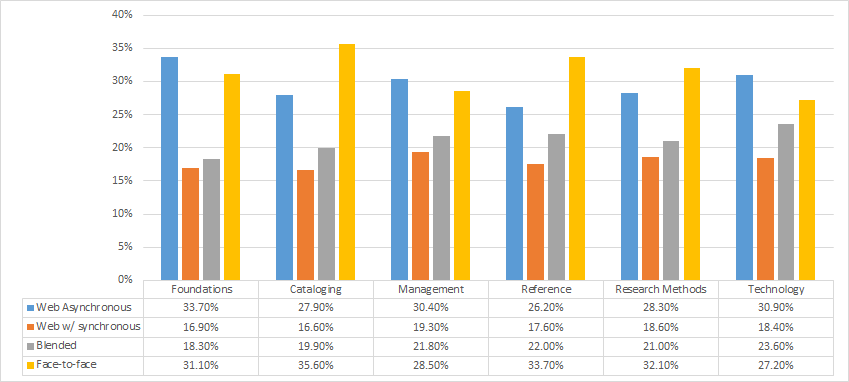
Table 2. Delivery Preferences for LIS Core Content Areas (n=891)
Four course delivery methods were included: (1) web-based asynchronous, which refers to delayed form of instruction where the instructor and students are often separated spatially and temporally, (2) web-based with synchronous, which refers to delayed form of instruction that incorporates synchronous instruction (e.g., online conferencing) to reduce temporal separation, (3) blended, which incorporates both face-to-face and delayed instruction delivery methods, and (4) face-to-face, which refers to the traditional form of course delivery method where students and the instructor were not separated spatially and temporally. Across the six core subject areas, almost half of them consistently preferred a mode that does not include any face-to-face delivery. It should be noted that students in partially online programs were slightly overrepresented (~ 10 %) in the sample, who showed a preference for face-to-face delivery as shown in Table 7.
No statistically significant difference was detected between race/ethnicity and course delivery methods whereas age (generational cohort), employment status, metro status, commute distance, and program modality were significantly (p < 0.001) associated with course delivery methods in all content areas. Since students' delivery preferences for different content areas were very close (see Table 2), Tables 3-7 that depict students' preferences by demographic variables used data for only the Foundations content area. This was done for illustration and consistency purposes because the Foundations courses are representative of all core content areas.
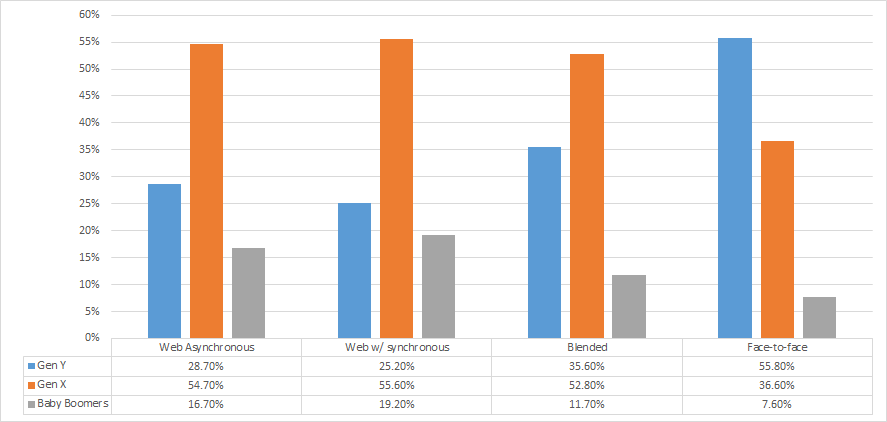
Table 3. Preference of Course Delivery Method by Generational Cohort (n=890)
As shown in Table 3, younger students (Gen Y) preferred to have content delivery methods that involved face-to-face instruction. In contrast, older students generally preferred to have online content delivery that does not require face-to-face instruction (p<0.001).
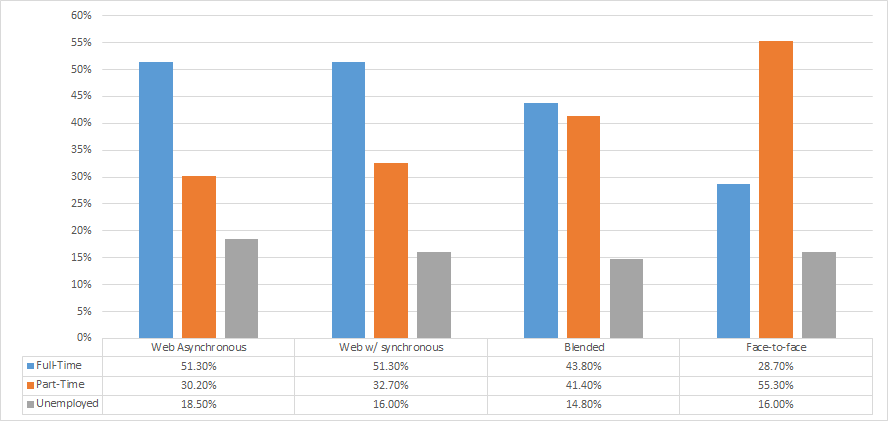
Table 4. Preference of Course Delivery Method by Employment Status (n=885)
A large majority of students who had full-time employment preferred online education with no face-to-face instruction requirement. In contrast, those who had part-time employment were more inclined towards face-to-face instruction (p<0.001) (see Table 4). No significant differences were observed among those who were unemployed at the time of the research.
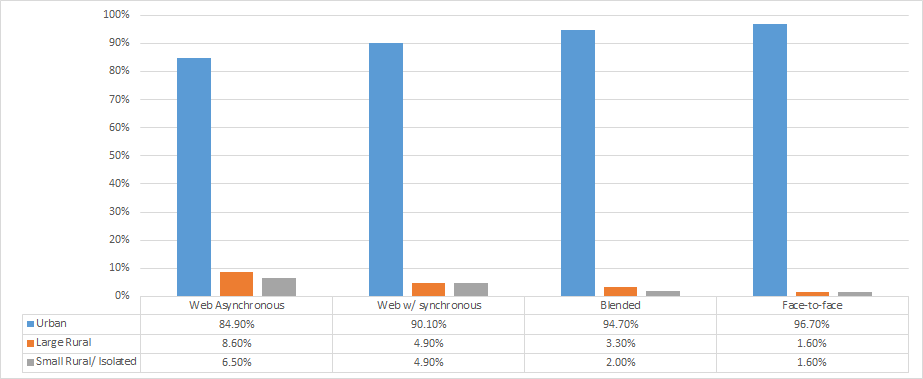
Table 5. Preference of Course Delivery Method by Metro Status (n=816)
A large majority of respondents lived in urban areas and did not show a preference for delivery method. However, those who lived in small rural/isolated areas had a slight preference for entirely online delivery, that is, web asynchronous or synchronous (see Table 5). Those who lived in rural or isolated areas favored online delivery (p<0.001). Students who lived close to campus (less than 50 miles) preferred to have face-to-face instruction whereas those who lived farther preferred an online delivery format (p<0.001).
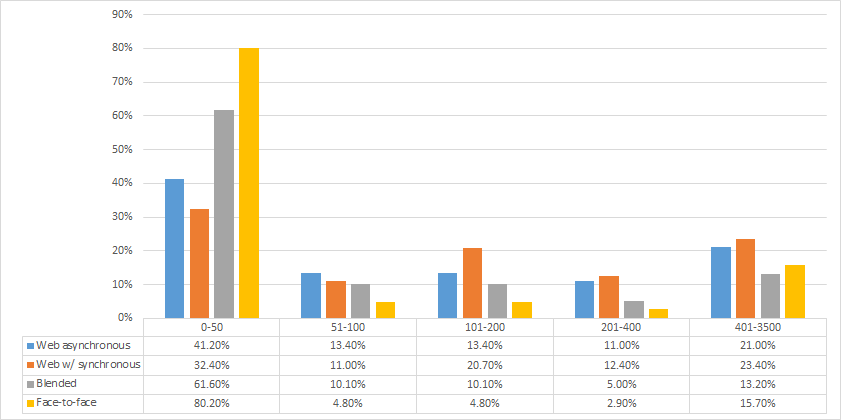
Table 6. Preference of Course Delivery Method by Commute Distance (n=868)
Students who were in entirely online programs consistently preferred delivery methods that did not require face-to-face instruction as opposed to those who were in partially online programs (p<0.001) (see Table 6). Further analysis of course delivery methods in each subject area by program modality confirmed that students in entirely online programs overwhelmingly preferred (> 70 %) delivery methods with no face-to-face instruction, whereas a similar portion of those, who were in partially online programs, preferred face-to-face delivery method (see Table 7), for example.
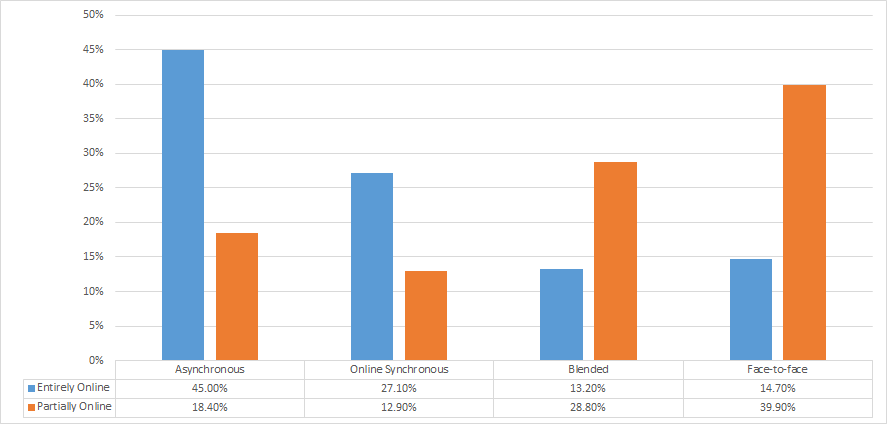
Table 7. Preference for Course Delivery Method by Program Modality (n=891)
Discussion and Conclusion
This study's results indicated five statistically significant indicators relating to preferred instructional delivery for MLIS core courses: age (generational cohort), employment status, metro status, commute distance, and program modality. More specifically, the results supported earlier findings that younger students who had part-time employment, resided in urban areas, and lived closer to the campus preferred a course delivery mode that requires some form of in-person instruction (face-to-face or blended) than their older peers who have full-time employment, resided in rural areas, and lived farther from campus (Oguz et al., 2015).
Entirely online students preferred asynchronous delivery over synchronous and blended delivery formats, while partially online students preferred face-to-face over blended, asynchronous, or synchronous. The partially online students' more positive perception of face-to-face instruction is consistent with findings of Hagel and Shaw (2006), Fortune, Spielman, and Pangelinan (2011), and Paechter and Maier (2010), where students perceived learning more in face-to-face courses and interacted more with their peers and instructors in a program that provided the option to take courses in either modality.
In LIS, the findings in this study are important for future comparative studies as the LIS field is evolving, and along with it, the core course requirements in LIS education. Online education is also being adopted in other countries. For example, Canada began offering its first entirely online ALA-accredited MLIS program in Fall 2013 at the University of Alberta. Existing studies will also provide the evidence to examine longitudinal changes in experiences and preferences in online education.
New online learning management systems (LMSs), enhanced pedagogy and digital natives' familiarity and ability in using such technologies are additional elements that need to be considered in future research. A question that is not typically addressed in existing studies is which LMS are online students using. For example, for asynchronous delivery, are there differences in terms of experiences and outcomes between different LMSs? What new pedagogical methods can now be applied, such as group discussions using breakout discussion rooms, that were not possible a few years ago? Are there differences in using the flipped classroom strategy in an online environment vs. a face-to-face environment? LMSs also provide opportunities for omnidirectional communication (student-teacher and student-student) not available in a face-to-face environment (Lobel et al., 2005). For example, students can chat privately with each other during a class session, which is not possible in a traditional face-to-face classroom, but is, if such information and communication technologies are used by each student.
The availability of data representing student academic performance and experience enables the compiling of learning analytics. The creation of individual learning profiles enables librarians, educators and support service providers to help students personalize their learning experiences, enhancing achievements and addressing gaps. An area for study is to understand any difference of applying learning analytics to help the online student vs. face-to-face student.
The proliferation of affordable ICTs, enhanced access to the internet, and proven student learning (e.g., Means et al., 2009) have stimulated the increased adoption of online education across the globe. Moreover, the evolution of open education through the availability of MOOCs (massive open online courses) (Yuan, Powell, 2013) means anyone around the globe with an internet connection is able to access these offerings and any other online education content. E-learning is the fastest growing market in education (Trends in Global Distance Learning, 2011), and by 2017, is expected to increase by 23 % (IBIS Capital, 2013). Online education is being quickly adopted in higher education across the globe ("8 countries leading," 2012). For comparative purposes, it is important to have studies that offer a baseline understanding of the experiences and preferences of students in different subject areas and levels of study, as well as geographical regions.
Bibliography
"8 countries leading the way in online education" (2012). ICEF monitor – market intelligence for international student recruitment, 28 June 2012. <http://monitor.icef.com/2012/06/8-countries-leading-the-way-in-online-education>. [Accessed: 06/04/2015].
"Accredited programs" (2012). Alphabetical list of institutions with ALA-accredited programs. <http://www.ala.org/accreditedprograms/directory/alphalist>. [Accessed: 16/04/2012].
"ALA" (2008). American Library Association, 15 July. <https://www.ala.org/ala/newspresscenter/news/
pressreleases2008/July2008/ALA_print_layout_1_499821_499821.cfm>. [Accessed: 24/07/2012].
"ALA defines core competences of librarianship" (2009).
<http://www.ala.org/news/news/pressreleases2009/february2009/hrdrcompetences>. [Accessed: 19/07/2013].
Allen, I. Elaine; Seaman, Jeff (2007). Online nation: five years of growth in online learning. Needham, MA: Sloan Consortium. <http://www.onlinelearningsurvey.com/reports/online-nation.pdf> [Accessed: 06/01/2015].
Bird, Nora J.; Chu, Clara M.; Oguz, Fatih (2011). "Four 'I's of internships for the new information society: intentional, interconnected, interdisciplinary and international". <http://libres.uncg.edu/ir/uncg/listing.aspx?styp=ti&id=8373>.
Chu, Heting (2006). "Curricula of LIS programs in the USA: A content analysis". In: Khoo, Christopher; Singh, Diljit; Chaudhry, Abdus S. (eds.). Proceedings of the Asia-Pacific Conference on Library & Information Education & Practice 2006 (A-LIEP 2006): Preparing information professionals for leadership in the new age: Singapore, 3-6 April 2006. Singapore: Division of Information Studies, School of Communication & Information, Nanyang Technological University, pp. 328-337.<http://arizona.openrepository.com/arizona/handle/10150/105144>.
[Accessed: 19/07/2013].
Clinefelter, David L.; Aslanian, Carol B. (2015). Online college students 2015: Comprehensive data on demands and preferences. Louisville, KY: The Learning House, Inc. <http://www.learninghouse.com/ocs2015-report/>.
[Accessed: 01/07/2016].
Dell, Cindy Ann; Low, Christy; Wilker, Jeanine F. (2010). "Comparing student achievement in online and face-to-face class formats". Journal of online learning and teaching, vol. 6, no. 1 (March 2010). <http://jolt.merlot.org/vol6no1/dell_0310.htm>. [Accessed: 07/01/2016].
Dutton, John; Dutton, Marilyn; Perry, Jo (2002). "How do online students differ from lecture students?". Journal of asynchronous learning networks, vol. 6, no. 1 (March 2002), pp. 1-20.
Dyrbye, Liselotte et al., (2009). "A qualitative study of physicians' experiences with online learning in a masters degree program: Benefits, challenges, and proposed solutions". Medical teacher, vol. 31, no. 2, pp. e40–e46.
Fortune, Mary F.; Spielman, Melany; Pangelinan, Dean T. (2011). "Students' perceptions of online or face-to-face learning and social media in hospitality, recreation and tourism". Journal of online learning and teaching, vol. 7,
no. 1. <http://jolt.merlot.org/vol7no1/fortune_0311.htm> [Accessed: 23/06/2015].
Global E-learning investment review (2013). IBIS Capital. <http://www.smarthighered.com/wp-content/uploads/2013/02/IBIS-Capital-e-Learning-Lessons-for-the-Future.pdf>. [Accessed: 06/04/2015].
"Google maps API" (2012). Google maps API - Google developers. <https://developers.google.com/maps/>. [Accessed: 12/07/2012].
Gulacar, Ozcan; Damkaci, Fehmi; Bowman, Charles R. (2013). "A comparative study of an online and a face-to-face Chemistry course". Journal of interactive online learning, vol. 12, no. 1 (Spring 2013), pp. 27–40.
Hagel, Pauline; Shaw, Robin N. (2006). "Students' perceptions of study modes". Distance education, vol. 27, no. 3, pp. 283–302.
Islam, Md. Shiful et al., (2011). "Towards exploring a global scenario of E-learning in Library and Information Science schools". The international information & library review, vol. 43, no. 1, pp. 15–22.
Lobel, Mia; Neubauer, Michael; Sweburg, Randy (2005). "Selected topics from a matched study between a face-to-face section and a real-time online section of a university course". The international review of research in open and distributed learning, vol. 6, no. 2 (July 2005), pp.1-17. <http://www.irrodl.org/index.php/irrodl/article/view/234>. [Accessed: 27/06/2016].
Lynn, Valerie A.; Bose, Arpita; Boehmer, Susan J. (2010). "Librarian instruction-delivery modality preferences for professional continuing education". Journal of the medical library association, vol. 98, no. 1 (July 2010), pp. 57–64.
Means, Barbara et al., (2009). Evaluation of evidence-based practices in online learning: A meta-analysis and review of online learning studies. Washington, D.C.: U.S. Department of Education, Office of Planning, Evaluation, and Policy Development. <http://files.eric.ed.gov/fulltext/ED505824.pdf>. [Accessed: 11/07/2014].
Mellon, Constance A.; Kester, Diane D. (2004). "Online library education programs: implications for rural students". Journal of education for Library and Information Science, vol. 45, no. 3 (Summer 2004), pp. 210–220.
Ni, Anna Ya (2013). "Comparing the effectiveness of classroom and online learning: teaching research methods". Journal of public affairs education, vol. 19, no. 2 (Spring 2013), pp. 199–215.
Oguz, Fatih; Chu, Clara M.; Chow, Anthony S. (2015). "Studying online: Student motivations and experiences in ALA-Accredited LIS Programs". Journal of education for Library and Information Science, vol. 56, no. 3, pp. 213–231.
Paechter, Manuela; Maier, Brigitte (2010). "Online or face-to-face? Students' experiences and preferences in
e-learning". The internet and higher education, vol. 13, no. 4 (December 2010), pp. 292–297.
Pastore, Ray; Carr-Chellman, Alison (2009). "Motivations for residential students to participate in online courses". Quarterly review of distance education, vol. 10, no. 3, pp. 263–277.
Pilkington, Rachel M.; Walker, S. Aisha (2003). "Facilitating debate in networked learning: Reflecting on online synchronous discussion in higher education". Instructional science, vol. 31, no. 1–2, pp. 41–63.
"RUCA Map Classifications". (n.d.). Rural Urban Commuting Area Codes Maps. <http://depts.washington.edu/uwruca/ruca-maps.php>. [Accessed: 12/07/2012].
Scott, Jack (2011). Distance education report. California Community Colleges Chancellor's Office. <http://extranet.cccco.edu/Portals/1/AA/DE/FinalDE2011Report.pdf>. [Accessed: 12/12/2011].
Small, Ruth V.; Paling, Stephen (2002). "The evolution of a distance learning program in Library and Information Science: A follow-up study". Journal of education for Library and Information Science, vol. 43, no. 1, pp. 47–61.
Thirunarayanan, M.O.; Bayo, Ivette; Slater, Ryan (2010). "Students' content preferences for taking online courses". International journal of instructional technology & distance learning, vol. 7, no. 7, pp. 11–32.
Trends in global distance learning. (2011). Washington, D.C.: Hanover Research. <http://www.hanoverresearch.com/wp-content/uploads/2011/12/Trends-in-Global-Distance-Learning-Membership.pdf>. [Accessed: 06/04/2015].
Wallace, Danny P. (2012). ALISE Library and Information Science education statistical report 2012. Chicago: Association for Library and Information Science Education.
Webb, Harold W.; Gill, Grandon; Poe, Gary (2005). "Teaching with the case method online: Pure versus hybrid approaches". Decision sciences journal of innovative education, vol. 3, no. 2 (Fall 2005), pp. 223–250.
Wyatt, Gary (2005). "Satisfaction, academic rigor and interaction: Perceptions of online instruction". Education, vol. 125, no. 3, pp. 460-468.
Yuan, Li; Powell, Stephen (2013). MOOCs and open education: Implications for higher education. Bolton, UK: University of Bolton, Centre for Educational Technology, Interoperability and Standards. <http://ictlogy.net/bibliography/reports/projects.php?idp=2397>. [Accessed: 06/04/2015].
similar articles in BiD
- Com es combaten les notícies falses mitjançant l'alfabetització informacional? : reptes i estratègies de formació en l'ensenyament superior. Antunes, María Luz; Lopes, Carlos; Sanches, Tatiana. (2021)
- La repercussió de les noves sortides professionals en les titulacions en Biblioteconomia i Documentació : un estudi exploratori. Weech, Terry. (2015)
- Evolución de técnicas de web social en programas educativos : aplicación a un máster 2.0. Ontalba Ruipérez, José Antonio; Maniega Legarda, David; Serrano Cobos, Jorge. (2008)
- Ensenyar mitjans i comunicació a l’era de la IA generativa : un estudi exploratori. Cusnir, Camelia; Surugiu, Romina. (2025)
- El portfolio digital com a facilitador d'una competència informacional diversificada i reflexiva. Barberà, Elena; Quintana, Jordi; Galván, Cristina; Rodríguez Illera, José Luis. (2016)
similar articles in Temària
- PIL (Project in Information Literacy) : conclusiones y recomendaciones de los informes 2009-2011. Head, Alison J.; Eisenberg, Michael B.. (2011)
- La acreditación de las competencias informacionales como requisito de los programas de Maestría y Doctorado. Moreno Reséndez, Alejandro; Corona Medina, José Luís; Rodríguez Martínez, Rafael; Arenas Vargas, Miguel. (2004)
- Gestión de contenidos digitales : primera aplicación docente de ContentDM en la universidad española : estudios de grado y máster la Facultad de Ciencias de la Documentación de la UCM. López Hurtado, Mariana; Valentín Ruiz, Francisco José; Olivera Zaldúa, María. (2012)
- L’ensanyament universitari del segle XXI : més enllà del paper. Farrús, Mireia; Noguera, Ingrid; Santanach, Francesc; Moré, Joaquim; López, Cristina; Appel, Christine. (2011)
- Universo UPF : un proyecto interactivo y participativo de visualización de datos acerca del entorno universitario. Freixa Font, Pere; Sora i Domenjó, Carles. (2010)
[ more information ]

 Creative Commons licence (
Creative Commons licence (